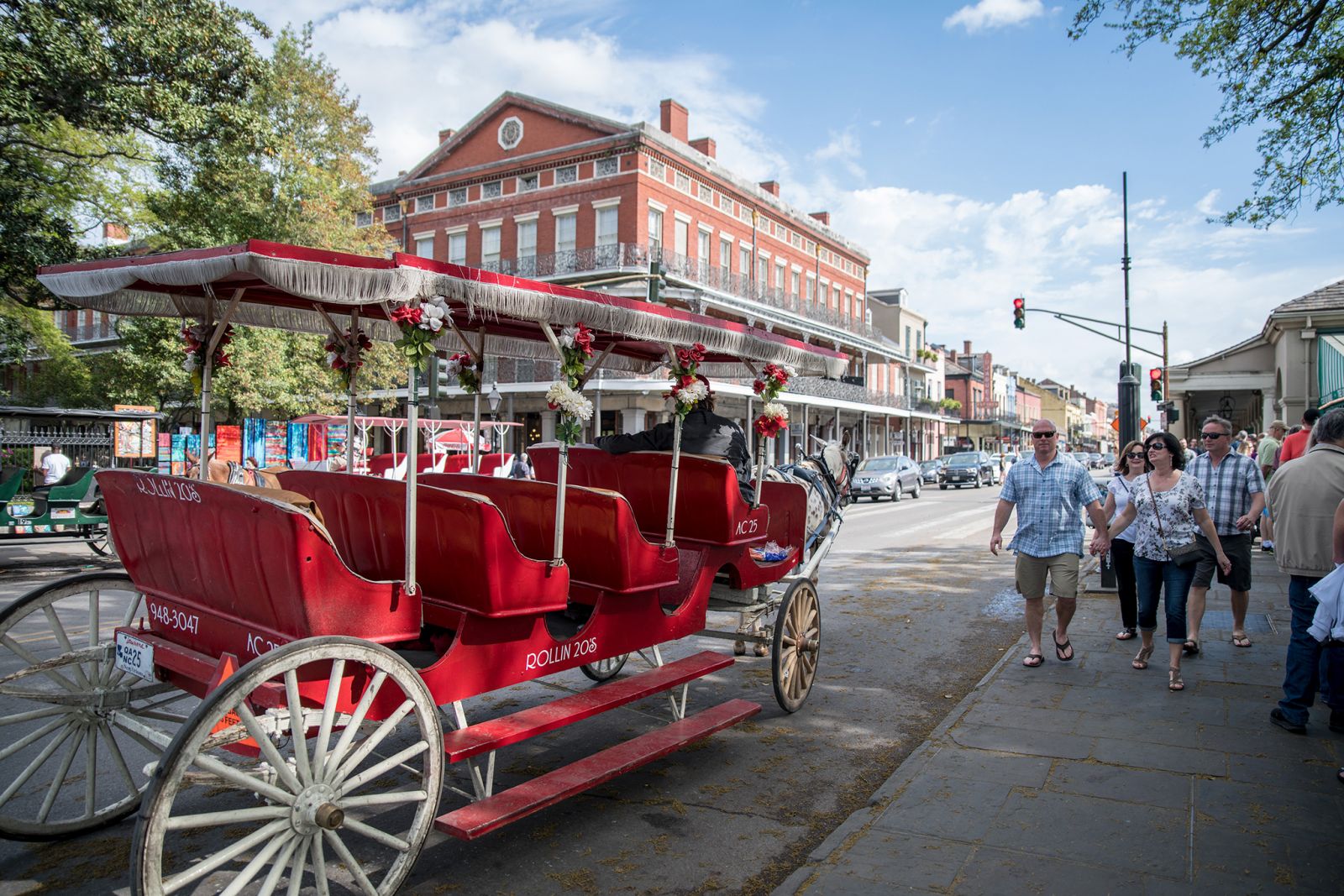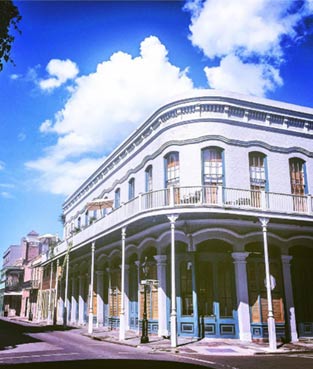New Orleans Facts
History, Eccentricity, and Originality: 25 Fascinating Facts About New Orleans

Get to know New Orleans with the this fun collection of historical facts and surprising information.
- New Orleans was founded in 1718 by Jean Baptiste Le Moyne, Sieur de Bienville. At first, the community was nothing more than a trading camp on the curving east bank of the Mississippi River. Later, the city was organized into a rectangular, fortified community, which still exists today as the French Quarter. The original streets, laid out in a grid, were named for French royalty and nobility.
- As "La Nouvelle Orleans" grew to the west, north, and east, the city followed the river's curve, becoming known as the "Crescent City" for its distinctive shape. Because New Orleans was completely surrounded by swamps and marshes (with a sea level of approximately six feet at its highest point), residents built levees, or earth embankments, to protect the city from the Mississippi River level's spring rise and hurricane tidal surges. The city's low sea level location also explains the ground level "basements" found in most of the New Orleans area's old structures. To this day, massive pumps and canals drain the city, as annual rainfall can be between 60" and 100".
- Established as the capital of the French colony of Louisiana, New Orleans was actually twice named the state capital. The title of capital city was moved from New Orleans to Donaldsonville in 1825, to Baton Rouge in 1846, to New Orleans in 1864 (during the Reconstruction period), and then again to Baton Rouge in 1879.
- Canal Street, once the widest street in the world, was named for a canal that was planned for, but never built, on the street's dividing median. For decades, the median's only use was public transportation, mostly by the Canal Street streetcars.
- The first New Orleans "skyscraper" was built in 1807. It was the first four-story building in the city, and is still in use, standing on the corner of Royal Street and St. Peter Street in the French Quarter. New Orleans also boasted the first opera house in America.
- The great chess master Paul Morphy was born at 1113 Chartres Street in the French Quarter. Today, the house is a museum by the name of the Beauregard-Keyes House, after the Confederate General. P.G.T. Beauregard and author Frances Parkinson Keyes (pronounced like "skies"), who also lived there.
- The Ursuline nuns braved five months of high seas, pirates, shipwreck and sickness to come to New Orleans in 1727. Their convent, located at Ursulines and Chartres Streets, was supposed to be constructed within six months of their arrival. It took seven years.
- In 1813, Governor Claiborne offered a $500 reward for the capture of legendary pirate Jean Lafitte; Lafitte countered by posting a $1,500 reward for the capture of Claiborne.
- The largest municipal park in the country, New Orleans' City Park was also home to the famous Duelling Oaks, where Creole gentlemen frequently met to settle scores with swords, pistols, and sometimes even Bowie knives.
- Several of Louisiana's lovely, historic plantations feature floor-level mirrors, in which ladies could ensure that no ankle was showing.
- The monument to General Andrew Jackson at Jackson Square was the world's first equestrian statue in which the horse had more than one foot off the base.
- The Ursuline Convent, the oldest brick-and-post building of the French Colonial style in America, also housed the nation's first girls' school.
- The Live Oak Society, composed entirely of trees with the exception of an honorary human chairman, used to require that each tree pay dues of 25 acorns per year.
- Young, high-society Creole maidens were not allowed to wear velvet or glance into the eyes of young men.
- The game of craps was brought in New Orleans by Bernard de Marigny; its name probably derives from "crapaud," the French word for "frog," since some Americans thought of the French as frog-eaters.
- In 1872, the official colors of Mardi Gras were chosen based on an honored visitor to New Orleans: Russian Grand Duke Alexis Romanoff. The purple stands for justice, the green for faith, and the gold for power.
- Grits probably originated from sagamite, a mixture of Indian corn boiled in water with butter or bacon fat.
- When ice got too expensive, some Creole families who loved to entertain would crush glass and sew it into cheesecloth bags, floating the bags in water pitchers to mimic the tinkle of ice.
- Eggs Sardou, created by Antoine Alciatore of legendary New Orleans restaurant Antoine's, is named for French playwright Victorien Sardou.
- Immortelles, funerary wreaths crafted from wire, beads and glass, once graced many New Orleans tombs; the custom has since faded away.
- Among the holdings of the Louisiana State Museum is a death mask of the face of Napoleon Bonaparte, cast by his attending physicians a day and a half after Napoleon died on the island of St. Helena.
- Tulane's school of business is the oldest college of commerce in the U.S.
- The total mileage of canals both above and below ground in New Orleans exceeds that of Venice in Italy.
- The St. Louis Cathedral is the oldest continually operating cathedral in the United States.
- The nightclub Tipitina's was named after a song by Professor Longhair.



